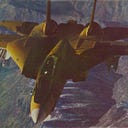Kropyva: Ukrainian Artillery Application
….and now something entirely different…
Few weeks ago, Adrien Fontanellaz, my colleague from Switzerland, has published the following article in French, on his LinkedIn account.
Adrien and me are working together for nearly a decade now, have published a number of books about contemporary military history, and thus couldn’t but ask him for a favour: how about an English translation and permission to re-publish here? He kindly provided both. Thus, here you are: the story of the Kropyva, Ukrainian Artillery App, by Adrien Fontanellaz.
***
The Russian and Ukrainian armies were both born out of the defunct Soviet army and still keep many similarities. One of the most salient is the predominant role played by artillery, Stalin’s beloved ‘God of War’.
From mid-2014 to early 2015, Russian and Ukrainian troops clashed in the Donbass, and the latter suffered several severe defeats. One of the keys to Russia’s early successes was the initial superiority of its ‘fire-reconnaissance’ complex: that is a combination of reconnaissance drones, electronic warfare and communications equipment and artillery batteries. This complex allowed them to drown enemy positions or units in a deluge of fire within fifteen minutes of their detection. 80 per cent of Ukrainian losses during the period were caused by Russian artillery as a result.
The Ukrainian army was in a sorry state after years of insufficient funding and had to be reconstituted in a hurry, to the point where the Ministry of Defence was ready to accept the support of various patriotic associations. One of them, Army SOS, inquired about the needs of the military and within a few months developed Kropyva (Urtica or nettles), a mapping intelligence application running on Android that allows a person with a terminal, usually a tablet, to easily mark an enemy position. The software then transmits the indication to nearby artillery pieces while allowing the coordination of their fire, resulting in synchronised fire against the same target from several separate positions.
Communication between the system elements is by satellite transmission. Whilst in military parlance such system is defined an Automatic Tactical Management System (ATMS), Kropyva functions in other words as a form of Uber for artillery and has made it possible to drastically increase its reaction time while reducing its vulnerability. The average time required to deploy a howitzer battery has been reduced by a factor of 5 — to three minutes -; the time required to engage an unplanned target by a factor of 3, to one minute; while the time required to open counter-battery fire has been divided by 10, down to 30 seconds. In a nutshell, and combined with the systematic use of drones for fire correction, Kropyva has increased the effectiveness of Ukrainian artillery by an order of magnitude, acting as a force multiplier.
The application has since been further developed through close cooperation between users and developers, with the flexibility and versatility of the system increasing over time. It can now be used for de-mining tasks too. As a result of this agile approach, the use of associations or small companies and the abundance of local IT specialists, the Ukrainians were able to develop a system quickly and at very low cost. It is also considered to be better than those in use in the US armed forces today thanks to its flexibility, whilst other Western armies still can only dream about such capabilities.
The Russians had identified the threat embodied by Kropyva already years ago. The hacker group Fancy Bear reportedly targeted the application between 2014 and 2016 already, but without apparent or sustained success. At the start of the hostilities in late February 2022, Russian cyber units mainly launched a systematic attack on Ukrainian satellite connection terminals to disrupt their communications. Kyiv responded by switching them to Starlink, the satellite network set up by SpaceX. Since then, Elon Musk’s company has proved itself to be an expert in neutralising Russian cyber and jamming attacks, ensuring, among other things, that Kropyva remains up and running.
